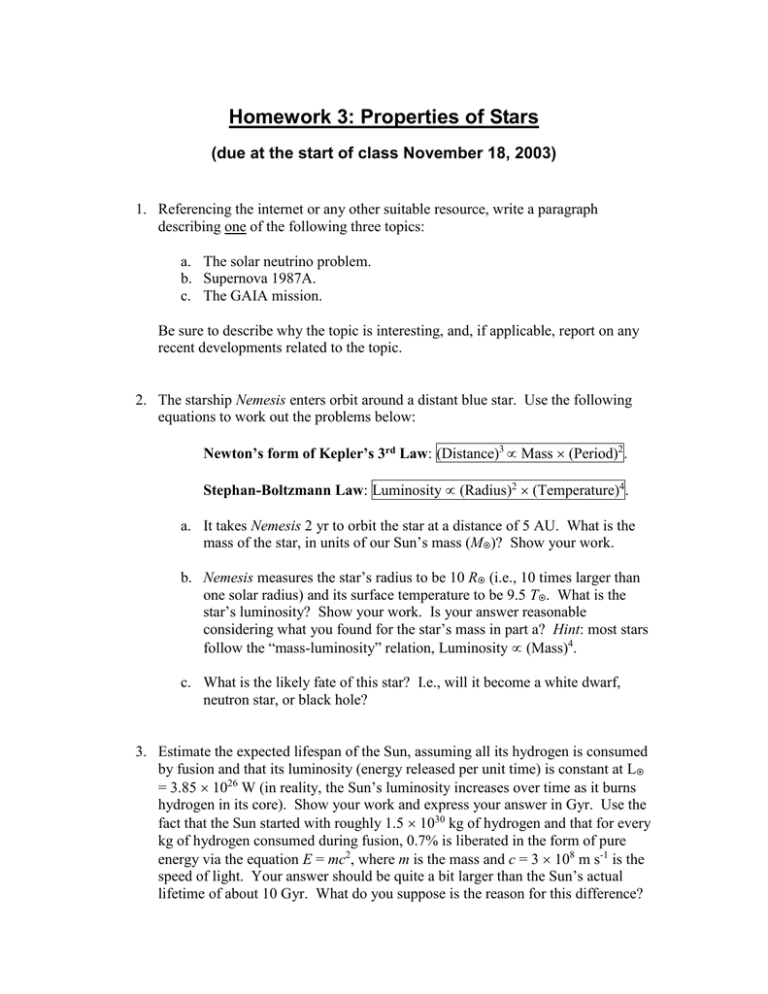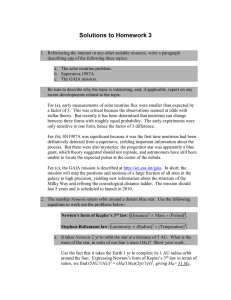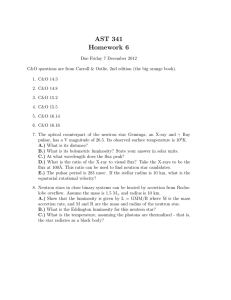Homework 3: Properties of Stars
advertisement

Homework 3: Properties of Stars (due at the start of class November 18, 2003) 1. Referencing the internet or any other suitable resource, write a paragraph describing one of the following three topics: a. The solar neutrino problem. b. Supernova 1987A. c. The GAIA mission. Be sure to describe why the topic is interesting, and, if applicable, report on any recent developments related to the topic. 2. The starship Nemesis enters orbit around a distant blue star. Use the following equations to work out the problems below: Newton’s form of Kepler’s 3rd Law: (Distance)3 Mass (Period)2 . Stephan-Boltzmann Law: Luminosity (Radius)2 (Temperature)4 . a. It takes Nemesis 2 yr to orbit the star at a distance of 5 AU. What is the mass of the star, in units of our Sun’s mass (M)? Show your work. b. Nemesis measures the star’s radius to be 10 R (i.e., 10 times larger than one solar radius) and its surface temperature to be 9.5 T. What is the star’s luminosity? Show your work. Is your answer reasonable considering what you found for the star’s mass in part a? Hint: most stars follow the “mass-luminosity” relation, Luminosity (Mass)4. c. What is the likely fate of this star? I.e., will it become a white dwarf, neutron star, or black hole? 3. Estimate the expected lifespan of the Sun, assuming all its hydrogen is consumed by fusion and that its luminosity (energy released per unit time) is constant at L = 3.85 1026 W (in reality, the Sun’s luminosity increases over time as it burns hydrogen in its core). Show your work and express your answer in Gyr. Use the fact that the Sun started with roughly 1.5 1030 kg of hydrogen and that for every kg of hydrogen consumed during fusion, 0.7% is liberated in the form of pure energy via the equation E = mc2, where m is the mass and c = 3 108 m s-1 is the speed of light. Your answer should be quite a bit larger than the Sun’s actual lifetime of about 10 Gyr. What do you suppose is the reason for this difference?



